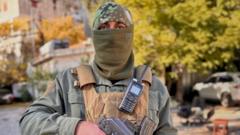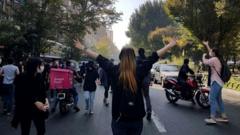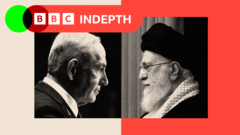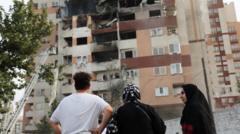In the aftermath of the Assad regime's fall, fear lingers in Latakia among Alawite residents as they navigate life under the new de facto rulers, Hayat Tahrir al-Sham (HTS). With reports of armed incursions and the community's apprehension about a reckoning for past allegiances, challenges emerge as liberation and anxiety coexist.
Tensions Rise in Latakia Amid New Governance Post-Assad

Tensions Rise in Latakia Amid New Governance Post-Assad
Amid the recent upheaval in Latakia, Alawite residents confront a new reality as Hayat Tahrir al-Sham (HTS) assumes control, juxtaposing hope and fear in the city's former heartland of regime power.
In the cool afternoon light, Noor trembles not from the chill but from fear as she stands in the courtyard, seeking help from Hayat Tahrir al-Sham (HTS), the new power in Latakia. The armed group, having overthrown Assad's regime, is now enforcing a new order. Noor, dressed warmly, recounts the harrowing experience of armed men taking over her home in the middle of the night, forcing her and her family into the streets.
Noor, an Alawite like many others in the region, expresses her distress about the changing power dynamics. Alawites make up only about 10% of the population in Syria, which is predominantly Sunni. Latakia, located on the northwest coast, has long been a stronghold for the community, linked to the Assad regime. As different rebel factions jostle for power, fear permeates the minority, worried about retribution for their previous support of the now-defunct regime.
At HTS's headquarters, once military intelligence offices, Noor presents CCTV footage evidence of her ordeal. She describes militants from northern city Aleppo who had forced their way into her apartment. HTS's Abu Ayoub, the general security commander, stands in military fatigues, surrounded by his armed men, intent on restoring order despite their previous alignment with al-Qaeda.
As complaints pour into the HTS station, the grim reality of the transition from revolutionary fighters to law enforcement is evident. The command center, now chaotic, replaces the former sense of dread with a new power dedicated to establishing some semblance of peace. However, the past looms large; the streets still echo with cries of former regime supporters labelled as "Shabiha," a name synonymous with the notorious militia accused of grievous atrocities.
Noor's case isn't unique. Armed incursions into homes are reported, leading to violent confrontations. An injured man bears witness to HTS’s promises but expresses skepticism over their ability to care for the diverse population they are now tasked to protect.
As the HTS patrols the streets of Latakia, aiming to quell violence and reassure citizens, mixed reactions surface among the populace. The once-feared regime may have crumbled, yet fear, born of years of authoritarian rule, continues to pervade the Alawite community. The majority finds solace in cheering for the HTS—a symbol of their liberation from an oppressor, yet buried in tension and uncertainty.
In a city where celebrations of freedom once sounded loudly, muted responses from Alawite quarters reveal an underlying dread as old adversities threaten to resurface. The HTS, voicing intentions to uphold unity, faces the daunting task of calming apprehensive residents, while Noor and others ponder the implications of a new chapter that remains fraught with challenges. Amidst the jubilation of liberation, significant apprehensions about the future linger, weighing heavily on a community with an uncertain fate.






















